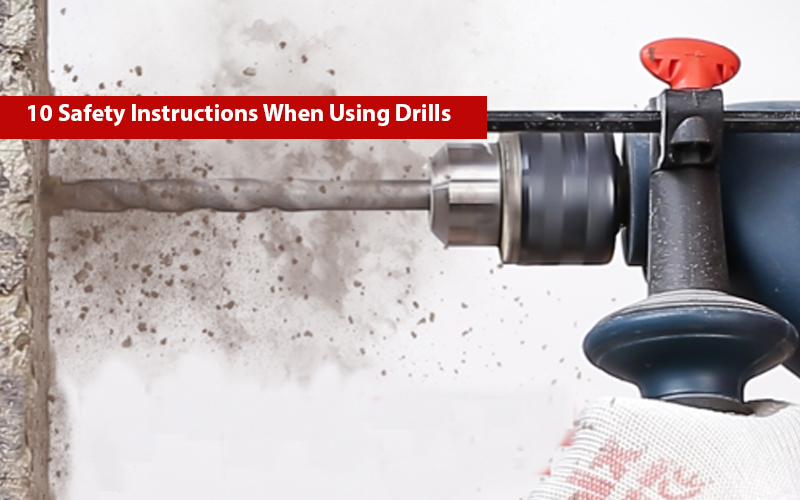- 5min
- 46329
- 0
Drills are the most widely used and applied tools in professional industrial or home applications. A drill can help you make holes with different diameters in different levels, including wooden surfaces, metal surfaces, cement, etc. Adding accessories to a drill you can use it for sanding, opening and closing screws, polishing, or even cutting. But before working with any tool, you must be aware of the way that tool or device works, and especially the safety points when using that tool. With a little knowledge in the field of safety and how to work with drills, you can both extend the life of your device and maintain your health. If you have ever used a drill in a project or at home, it means you have the basic information of working with a drill. However, here there are some tips for working with drills by which you can keep yourself and your machine healthy.
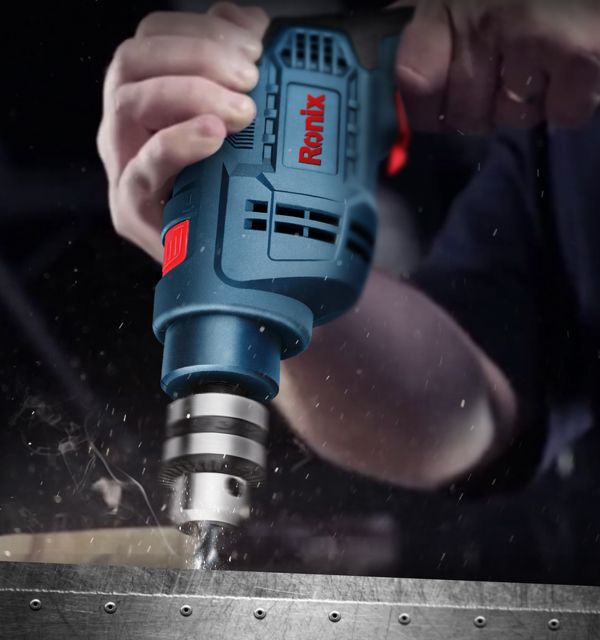
1. Choose the Right Kind of Drill
The first step in doing successful drilling is choosing the right size and type of drill and drill bits. Of course, there is a large variety of drills including Electric Corded drills, Corded Impact Drills, Corded impact wrench, etc. with all Ronix Tools Company can provide you.
2. Don’t Forget Safety Workwear & Protective Clothing
Always wear safety goggles to perform safe drilling. Respiratory masks are also recommended to avoid inhaling the dust made by drilling. Gloves are also very good tools and they can be helpful if they are exactly the size of your hand. So, try to choose the right size gloves so they can protect your hands against damages.
3. Make Sure the Drill Chuck is Tighten Enough
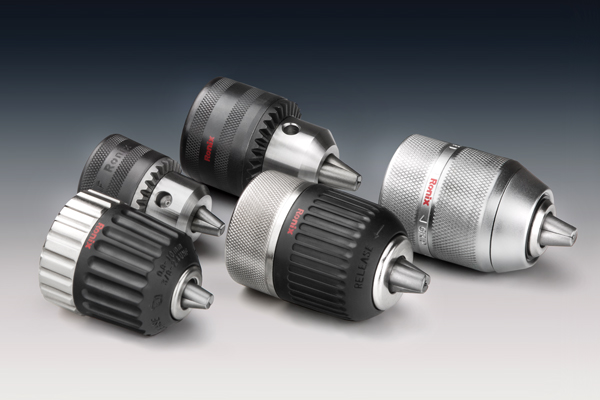
Before starting to drill, make sure that the drill works firmly and smoothly in the chuck. In case the chuck is loose, the drill bit won’t turn. For tightening the chuck in a drill, first, insert the drill bit into the drill chuck. Then, tighten the drill chuck until it clicks some times. After that, rotate the chuck back, until you hear and feel a single click. When you hear the last click, it shows that the drill bit is locked securely into its place.
4. Tighten Your Workpiece
In order to avoid any movement in your workpiece, tighten it with a clamp before starting to drill. Never hold the piece with your hand, and use both hands to hold the drill so you won’t lose control of the drill.
5. Do Not Apply Too Much Pressure on the Drill
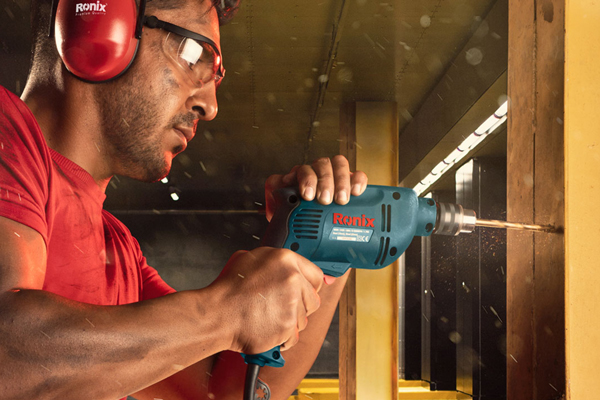
Most of the drilling work should be done by the motor itself. By applying too much pressure, the drill may slip or the motor may be damaged. So, it is important to adjust your drill speed, and the amount of pressure you apply, which depends on the material you’re working with. For example, in order to make rough holes when woodworking, you can apply high speed and pressure. But by pushing hard you may increase the chance of tear-out. When you start a hole in wood, try to go a bit slower and keep the bit as straight as possible to decrease the risk of splintering.
6. Avoid Wearing Jewelry and Loose Clothes When Drilling
Wearing jewelry, scarf and clothes with long and loose sleeves is dangerous when working with drills. The motion of a drill could grab and pull the hanging objects, which leads to a dangerous situation. So, when you are drilling, tie your hair back if it is long, and roll your sleeves up if they are long and loose.
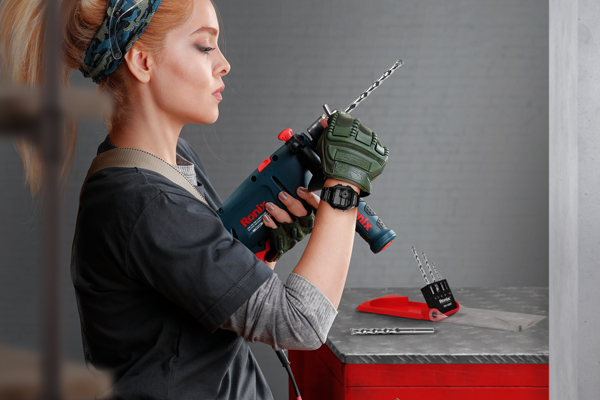
7. Mark the Drilling Place
On surfaces such as metal glass etc., the drill might slip, it is best to first hit the work surface with a nail and mark it. Then make a hole with a smaller drill. After that, drill a hole with the main drill bit. This will make it easier for you to drill straight and clean. When working on the tile, you can also stick a piece of paper on the targeted point to prevent the drill from slipping.
8. Turn off the Drill When Water Spills on it
If water spills on your electric corded drill, unplug it, then dry it with a Ronix heat gun or a regular dryer to avoid the possible risk of electric shocks, or your tool burning out. If you are using a rechargeable cordless drill driver, remove the battery and leave the device to dry. Of course, Ronix Tools can provide you with Waterproof Cordless Drills that can resist water.
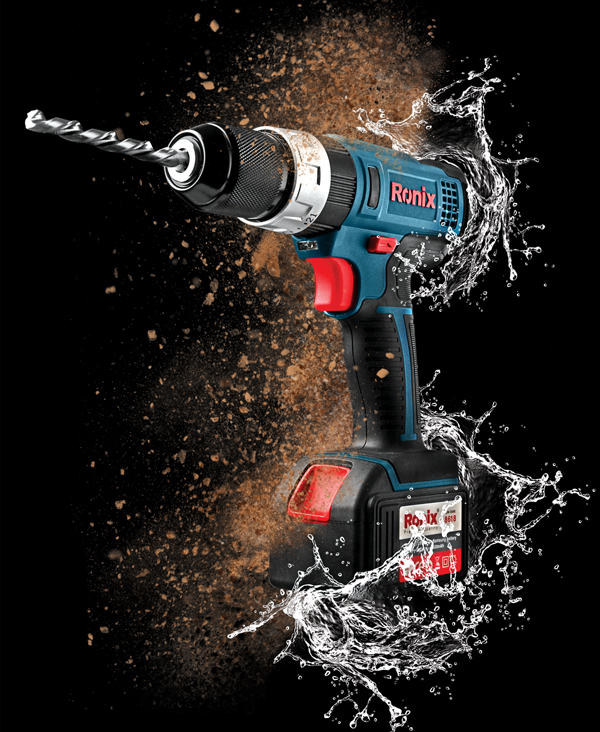
9. Use a Drill Base
The drill base acts as a guide and a frame. You can use a drill base when you want to drill a hard surface. A drill base will help you a lot in cases where straight drilling is difficult.
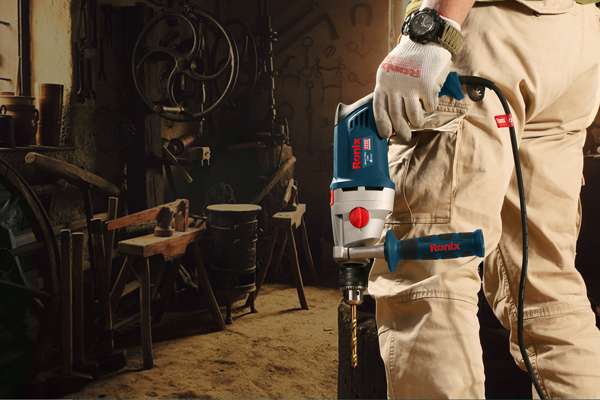
10. Don’t Hold or Hang a Corded Drill from its Cable
Never hold or carry a corded drill while it’s hanging from its cable; this could cause a wire break and maybe short-circuits.

Ronix
10 March 2021
